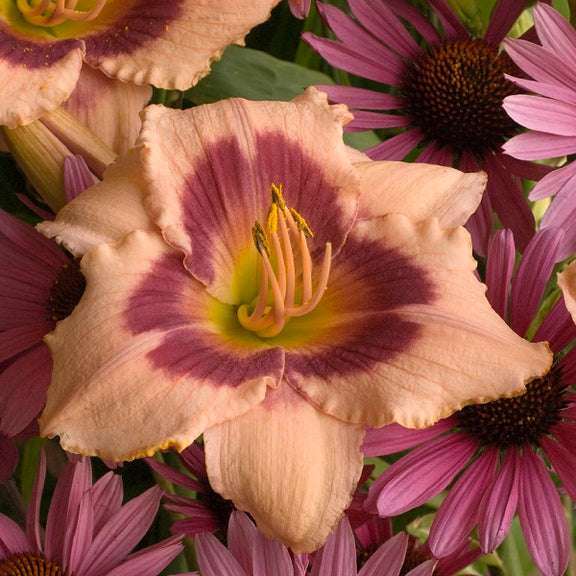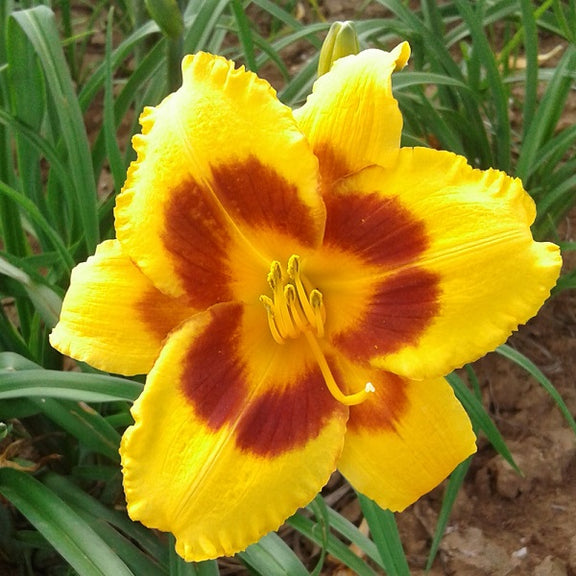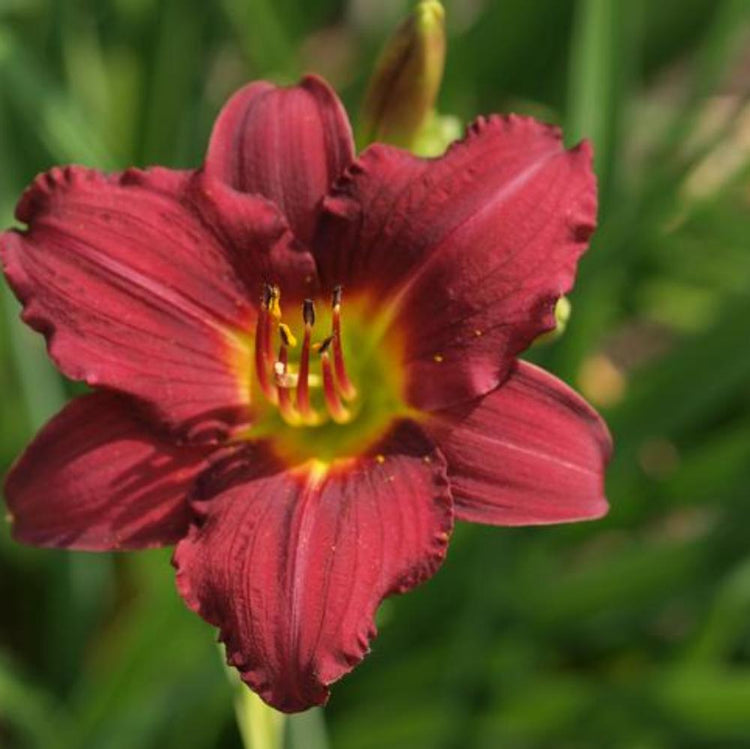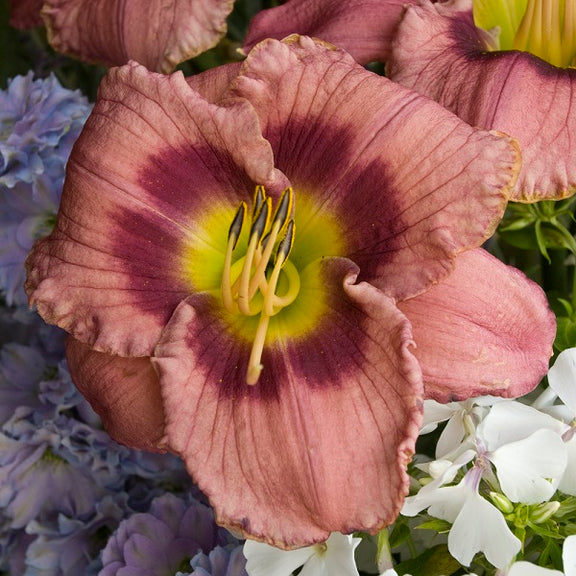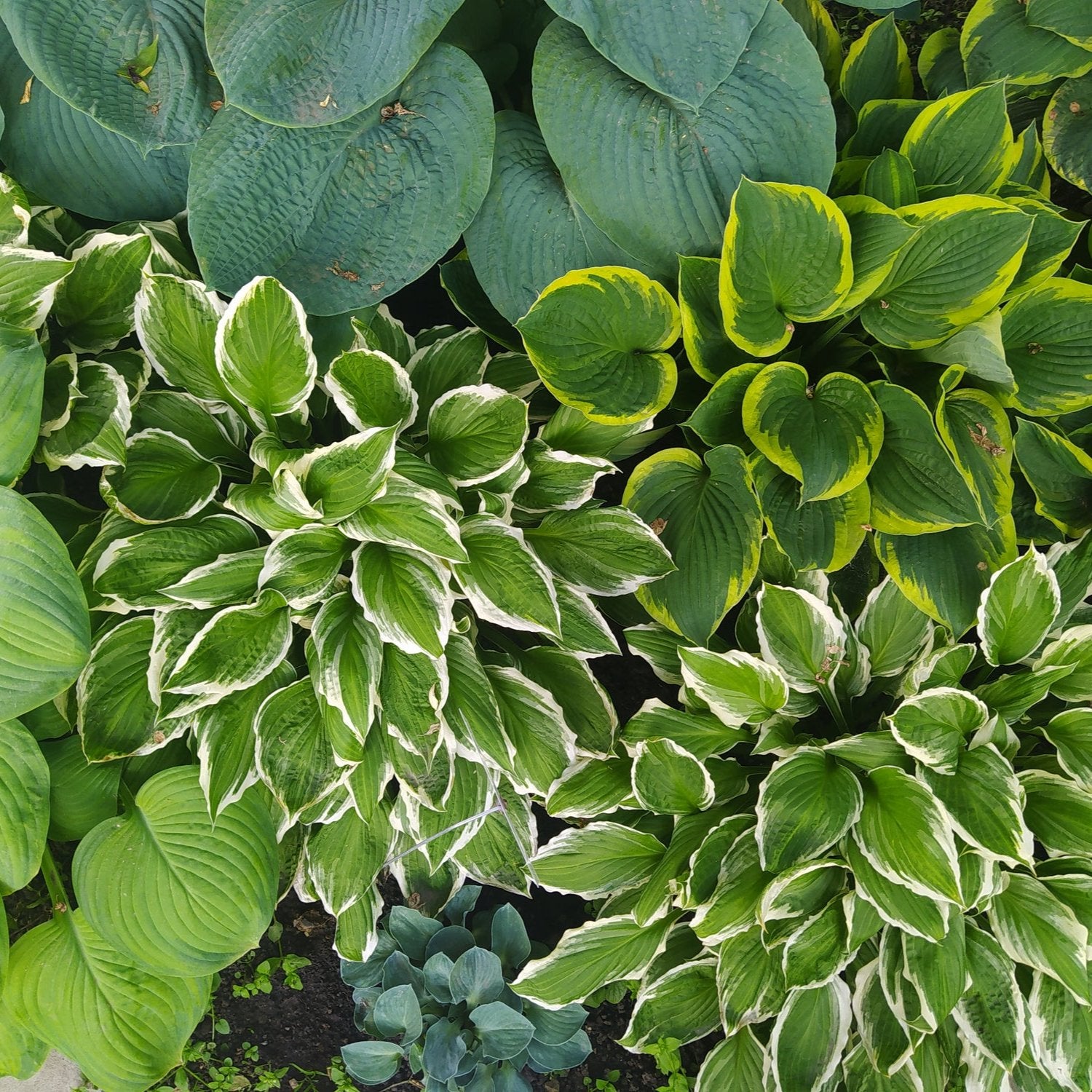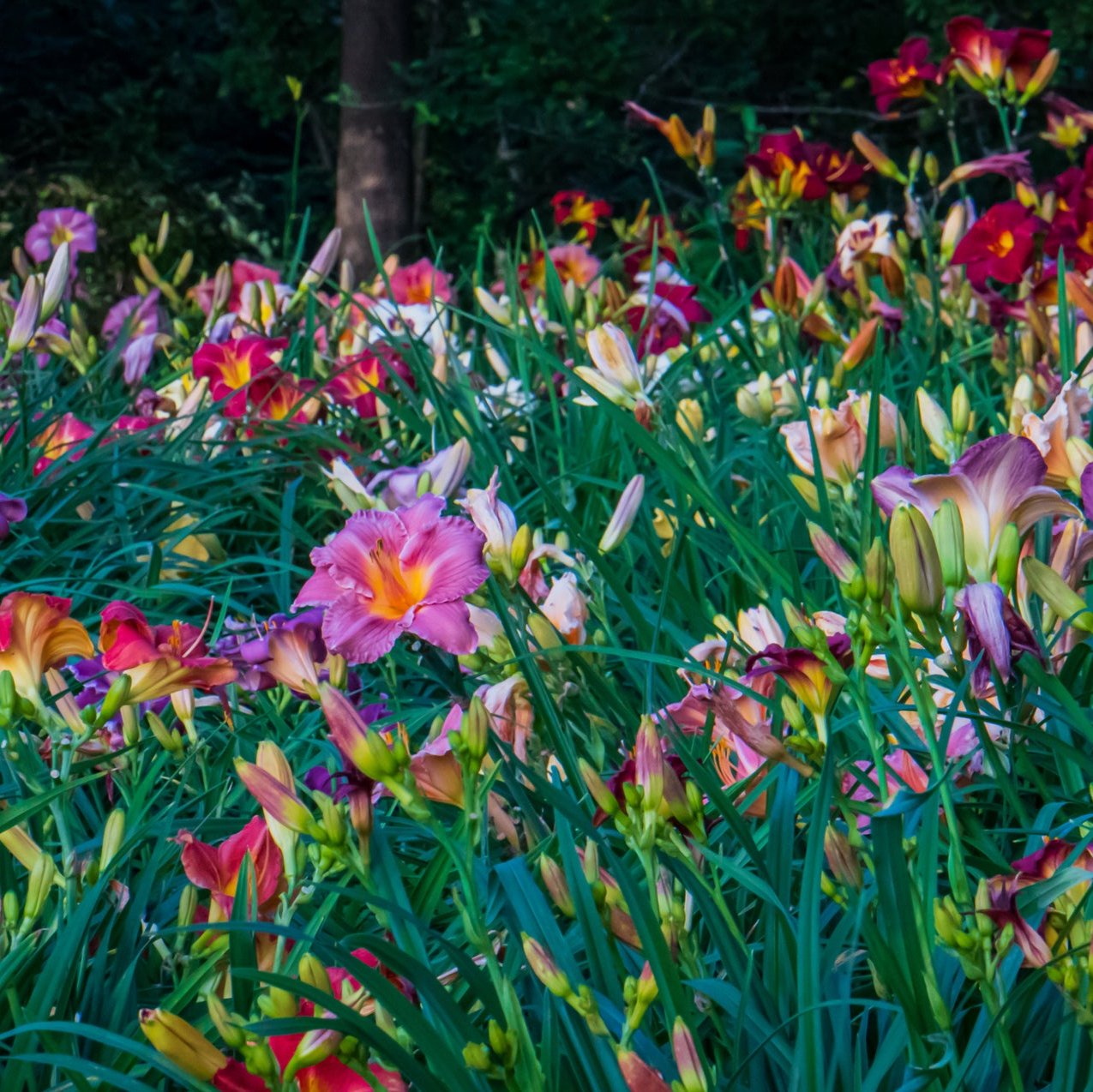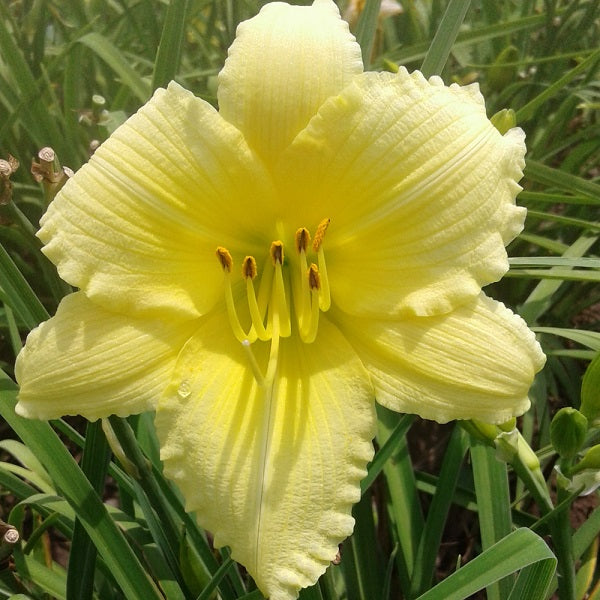As a self-professed plant geek, I’m compelled to try obscure varieties and plants that have a reputation for being difficult. I just can’t resist the challenge. But over the years I’ve learned that gorgeous gardens are created not with novelties, but with plants that are both beautiful and dependable like the Daylily.
If your grandmother had a garden, chances are good she grew daylilies. This easygoing perennial has been a favorite for generations and for good reason! I always recommend daylilies for a garden because they’re low-maintenance, showy in the garden and the late-blooming varieties will offer bold, trumpet blossoms until fall. If you choose several different varieties that bloom early, mid and late in the season, you can extend their bloom time throughout the entire season.
The scientific name for daylily is Hemerocallis, which translates from Greek to “beauty” and “day.” The blooms only last one day, but don’t worry! Daylilies grow in clumps with many blooms on each stalk. Much like fireworks, they’ll give you one exploding bloom after another for many weeks. They are one of the few mainstays that I rely on for gorgeous flowers and foliage year after year. The following varieties are colorful, floriferous, and vigorous; everything you expect from a daylily, but more of it. They are certainly winners in my garden, and I recommend them for yours.
‘Happy Returns’ Daylily – Lemon yellow blooms with tepal edges that are slightly crimped. Descended from Stella de ‘Oro, this re-bloomer is slightly larger and colored a much purer yellow than its parent. A reliable performer in warm and cold climates. One of the longest in bloom of any daylily!
The best long-blooming red daylily! Great garden combination when planted with Happy Returns for a full season of bloom!
Daylilies are perfect for slopes, beds, near foundations or even in containers. They need at least six hours of direct sun per day to thrive, but they will bloom even better in a full day of sunshine. When planting a daylily, set the plant in the ground or in a container at the same depth it was growing in the pot you bought it in. You want to avoid planting it too deeply. Space plants 10 to 12 inches apart in the ground or grow just one as a “thriller” in your combination container. For best results, add some compost, especially if you have heavy clay or sandy soil. Water your newly planted daylilies consistently during the first growing season as they establish themselves.
You’ll find one of the best things about growing daylilies is they multiply! Divide and share with friends or plant elsewhere in your garden. Spring or late summer is the best time to divide and share daylilies. To do this, carefully lift the clump out of the ground with a shovel and divide it with a sharp knife, removing any sickly-looking foliage. Cut the foliage down to about half its height and then transplant the divided pieces back into the garden immediately.
Because of their association with grandmothers, daylilies have a vintage feel, but I prefer to call them “timeless.” Though they’ve been around for generations, newer varieties have improved upon the older ones, making them stronger, brighter, and more generous with their blooms. If you choose any of Gilbert H. Wild and Son’s daylily varieties, you are guaranteed to enjoy seemingly endless waves of flowers well into summer.



